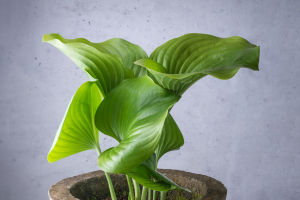Lilac:A Tale of A Beauty
Dear Lykkers! Lilacs are enchanting flowers known for their lush clusters and mesmerizing fragrances that herald the arrival of spring.
Let's explore the fascinating world of lilacs, their types, uses, and how to cultivate them to enjoy their beauty all year long.
What Are Lilacs?
A Romantic Flower: Lilacs are deciduous shrubs or small trees native to the woodlands and scrublands of Eastern Europe and Asia. Their delicate flowers bloom in shades of purple, white, pink, and even blue, adding an ethereal charm to gardens and landscapes. The flowers appear in large clusters that can grow up to 8-12 inches in length, creating an impressive visual display.
Varieties of Lilacs: Lilacs come in several varieties, each with its own unique characteristics. The Common Lilac (Syringa vulgaris) is the most widely recognized, with its fragrant, purple flowers. Other popular varieties include the French Lilac, which offers a broader range of colors, the Dwarf Korean Lilac (Syringa meyeri), known for its compact size and dense flowers, and the Persian Lilac (Syringa persica), a shorter, bushier type perfect for smaller gardens.
Top 5 Most Beautiful Lilacs | NatureHills.com
Video By Nature Hills Nursery
Benefits of Growing Lilacs
Exquisite Fragrance: One of the most celebrated qualities of lilacs is their powerful fragrance. The scent of lilac flowers is sweet and floral, often used in perfumes and aromatherapy to evoke a sense of peace and nostalgia.
Attracts Pollinators: Lilacs are a favorite among pollinators such as bees and butterflies. Planting lilacs in your garden can support local ecosystems and encourage a healthy environment by attracting these beneficial insects.
Low-Maintenance Plant: Lilacs are known for being hardy and relatively easy to care for. They can thrive in a variety of soil types, are drought-tolerant once established, and require minimal pruning to maintain their shape and vigor.
How to Grow and Care for Lilacs
Planting: Lilacs thrive in well-drained soil with a neutral to slightly alkaline pH. Choose a location that receives full sunlight, as lilacs need at least 6 hours of direct sun each day to bloom well. Plant lilacs in the fall or early spring to give them time to establish their roots.
Watering: Water lilacs regularly during their first year to help them establish a strong root system. Once established, they are relatively drought-tolerant but benefit from deep watering during dry periods to promote healthy growth and flowering.
Fertilizing: Use a balanced fertilizer in the early spring to encourage blooming and healthy foliage. Avoid excessive nitrogen, as this can promote leaf growth at the expense of flowers.
Pruning: Prune lilacs immediately after they have finished blooming to remove spent flowers and encourage new growth. Regular pruning will also help maintain the plant's shape and prevent it from becoming too leggy.
Creative Uses for Lilacs
Garden Borders and Hedges: Lilacs make excellent hedges or borders for gardens due to their dense foliage and beautiful blooms. Plant them along pathways or property lines to create a natural, fragrant barrier.
Cut Flower Arrangements: Lilacs are perfect for cut flower arrangements, adding a touch of elegance and a wonderful scent to any room. Their long stems and clusters of flowers create a stunning centerpiece or bouquet.
Perfumes and Potpourri: The intoxicating fragrance of lilacs is often used in perfumes and potpourri. Dry the flowers and mix them with other fragrant botanicals to create a natural, homemade air freshener.
Lilacs are more than just beautiful blooms; they are a celebration of spring and a symbol of love and renewal. By planting and caring for lilacs, you can enjoy their captivating colors and scents year after year, turning your space into a fragrant paradise. Embrace the timeless charm of lilacs and let these elegant flowers bring joy to your life.


